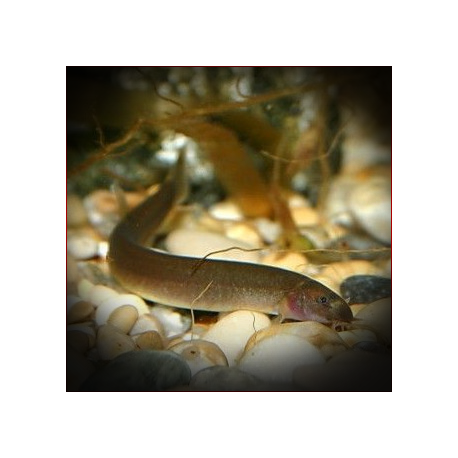More info
Datasheet
| Minimum Tank Size | 60 litres / 15.85 US gallons |
| Maximum Size | 8.0cm / 3.15inches |
| Temperature | 21°C / 69.80°F - 26°C / 78.80°F |
| Hardness | 0.00dgH / 0ppm - 8.01dgH / 143ppm |
| pH | 3.5-7.0 |
General Description
Pangio Oblonga, commonly known as the Black Kuhli Loach, is one of the readily-available species in the hobby and can be recognized by its plain to reddish-brown body coloration, lack of nasal barbels, and possession of 45-47 vertebrae. Belonging to the Cobitidae family, these loaches have a long, slender body shape with a relatively high number of vertebrae and a unique dorsal-fin position.
Aquarium Setup
For setting up an ideal aquarium for the Black Kuhli Loach, it is recommended to use a soft, sandy substrate as these fish like to dig and bury themselves. It is crucial to avoid coarser gravel to prevent stress or injury. Providing driftwood roots, branches, and dried leaf litter creates a natural environment with shady spots for the loaches to explore. Dim lighting and aquatic plants like Microsorum, Taxiphyllum, and Cryptocoryne are suitable. A gentle filtration system with minimal surface agitation is preferred, and care should be taken to prevent small individuals from getting into filter intakes.
Behaviour
Pangio Oblonga are peaceful both with each other and other tankmates but may prey on eggs or fry. In nature, they form large aggregations and tend to shoal in captivity, seeking refuge in nooks or caves. It is advisable to keep them in groups of at least 5-6 specimens. Compatible tankmates include small, peaceful species from similar environments like Boraras, Sundadanio, and smaller Rasbora. Research is essential when considering sand-dwelling loaches from the Nemacheilidae family due to potential aggressiveness.
Feeding and Diet
Being micropredators, Black Kuhli Loaches sift mouthfuls of substrate to extract insect larvae, small crustaceans, and organic detritus. In captivity, they accept sinking dried foods but should be provided with live and frozen options like Daphnia, Artemia, and bloodworms to ensure a balanced diet.
Reproduction & Dimorphism
While there are documented instances of breeding in aquaria, controlled conditions are rare. Females are typically heavier and larger than males, with mature males exhibiting branched and thickened first pectoral-fin rays. Reproduction usually occurs among gravel substrates with no observed courtship behavior.
Habitat and Distribution
Found predominantly in shallow, slow-moving forest streams in regions such as Java, Sumatra, Borneo, Peninsular Malaysia, and Thailand, Black Kuhli Loaches thrive in shaded areas with minimal dissolved minerals and low pH levels. They are often associated with peat swamps, blackwater environments, and leaf litter piles. The species is considered to have a broader distribution, indicating potential genetic diversity within different populations.

